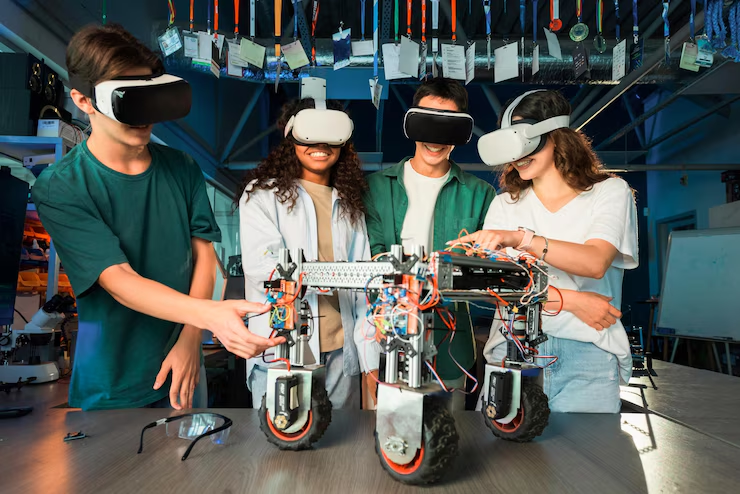A major milestone has just been achieved in space technology, bringing us one step closer to building data centres and solar power stations in orbit — all without human hands.
In a joint project between the United Kingdom Atomic Energy Authority (UKAEA) and space innovation company Space Solar, robotic arms were successfully tested for assembling large structures in space. This trial, known as AlbaTRUSS, was conducted at the UKAEA RACE (Remote Applications in Challenging Environments) facility in Oxfordshire.
These robotic systems are designed to automatically build giant frameworks — like those needed for solar farms and data centres — while orbiting the Earth. This is a big win for the In-Space Assembly and Manufacturing (ISAM) industry, which focuses on building and maintaining space structures without the need for astronauts on site.
Solar Energy from Space: A Future Power Source for Earth
Space Solar is working on satellites that will collect solar energy in orbit and transmit it back to Earth using microwaves. These satellites, several kilometres long and about 20 meters wide, could supply clean, constant power to the planet.
“Sunlight in space is available 24/7,” said Dr. Sam Adlen, co-CEO of Space Solar. “Our goal is to collect that energy with space-built satellites and send it down to Earth as usable electricity.”
This kind of technology could play a huge role in creating low-carbon energy solutions, especially at a time when the world is looking for sustainable alternatives to fossil fuels.
Robots Leading the Way in Space Construction
The AlbaTRUSS demonstration proved that dual-arm robots can assemble modular pieces of a satellite’s structural frame — completely on their own. This is key because the satellites needed for space solar power are made up of thousands of units. Assembling them in orbit without human intervention saves time, cost, and risk.
While the idea of space solar power isn’t new (it’s been studied for decades), this project shows how close we are to making it real. Until now, the challenge has been building the massive satellites required — but robotic construction could finally solve that problem.
Why It Matters for the Future
Professor Rob Buckingham, Executive Director of UKAEA, said, “Whether it’s a fusion power plant on Earth or a station on the Moon or Mars, the need for reliable, remote construction is growing. We’re preparing not just for energy needs, but for the next chapter in human exploration.”
With these robotic advances, we may soon see space-based data centres and solar stations becoming a reality — built by machines, orbiting above us, and powering our future.


